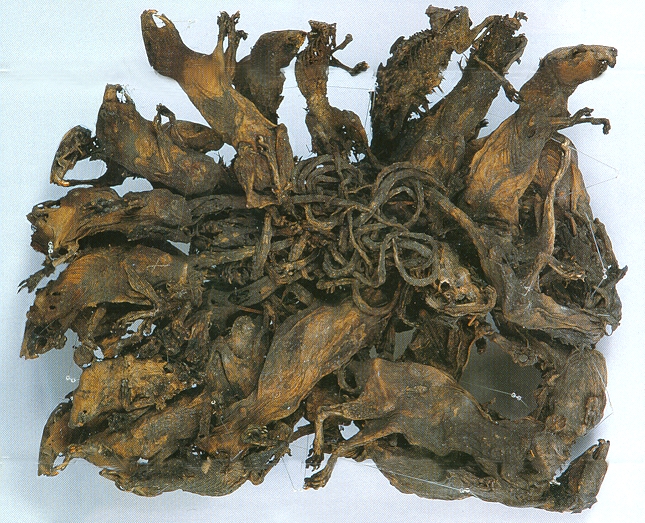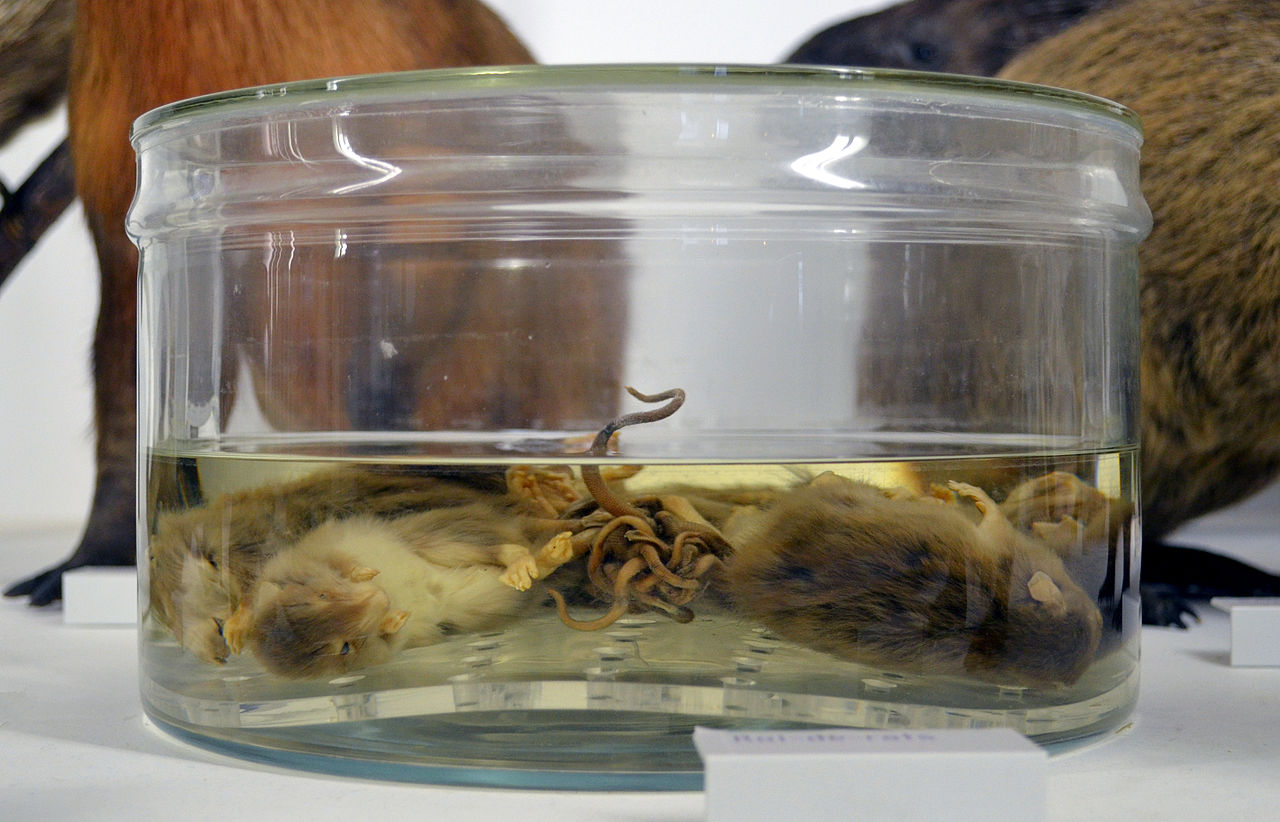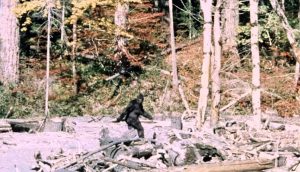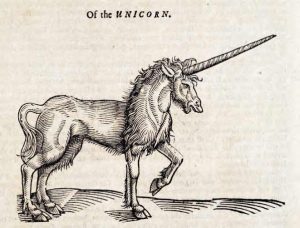Rat Kings: Folk Legend Or Reality?
“Ratking” by Photographed at Naturkundliches Museum Mauritianum Altenburg. Licensed under CC BY-SA 3.0 via Wikimedia Commons.
The term ‘rat king’ brings to mind a doll house and a tea party with cute little stuffed mice eating cakes and wearing capes and crowns; unfortunately rat kings in reality are a lot more sinister and uncomfortable to look at. A rat king is a group of rats whose tails have become stuck together (because of ice, blood, sap, faeces etc) and have lived and died stuck together in a grim wheel of death.
Reports of rat kings are rare, but they date back to the 1500’s when they were considered a bad omen; which is fair enough really, rats carry diseases and eat your food, if you came across a dead or even worse – dying, wheel of rats you could be excused for curling your toes and screaming like a girl.
Many of the original sightings were in Germany, and for a while it was assumed that the rat king phenomenon was wholly invented. In total just 58 reliable rat kings had been registered since 1564 and it was assumed they could have been fabricated by nutters or wannabe mystics. Sightings over the years certainly have diminished but after recent discoveries and research in Estonia it seems that the rat king phenomenon isn’t a fake at all.
“Ratking – Nantes” by Selbymay – Own work. Licensed under CC BY-SA 3.0 via Wikimedia Commons.
An Estonian study unearthed more modern examples of rat kings and in a paper published in 2007 in the Proceedings of the Estonian Academy of Science, Biology and Ecology they finally demystified the genesis of the rat king. A farmer’s discovery of a rat king at Tartu, Estonia accidentally began an unparalleled delve into the mechanisms at work in their formation, and pretty much proved they weren’t faked all along (well, not all of them any way).
The paper found that the perfect storm for the grim wheel’s creation is freezing temperatures and the black rat. Here’s the unfurling of the Estonian rat king:
An Estonian farmer called Rein Kıiv, in the village of Saru, found a squeaking ball of rats on the sandy floor of his shed. The rats were unable to escape and were killed with a stick. After the rat’s demise the entire ball of critters was unearthed from the ground. In all there were 16 rats tied together at the tail, 7 of which were still alive. The ones who were alive had obviously tried to dig their way out of the narrow tunnel and kicked the sand back onto those behind, suffocating them.
The farmer wasn’t aware of the rat king phenomena but thought the grim collection was worthy of note and left it outside his property on some planks of wood so that passersby could have an oggle. After a couple of months had passed a local reporter (a relative of his wife) saw the rat king and decided to ask local zoologists to comment. This sparked an avalanche of stories of other rat king finds across Estonia and Mr Kıiv’s grim find ended up in the Natural History Museum at the University of Tartu.
Time, weather, decay and predators mean that the Tartu rat king’s knot has been untied, but compression wounds on the rat’s tails show that it was, at one point, very tight indeed. An X-Rays also shows that the rats were alive for quite some time in this joint existence.
The writers of the paper discuss a number of possible explanations for the rat king’s genesis. First – falsification, but none of the Estonian finders made any money or sought any fame, so that seems unlikely. It’s also nigh on impossible to tie live rats tails together without anaesthesia, and conditions on an Estonian farm don’t really allow for that sort of technology.
Another theory was that when frightened the rats would rap their tails around each other for comfort, but the rats were always found in safe places so this seems unlikely. The third and more probable theory is that the rats huddle together in their burrows when sleeping (which they are known to do) and due to particularly cold conditions their tails all get stuck together with ice. As they attempt to free themselves from each other by crawling over and under, the knot is formed. This theory is backed by the Estonian finds. They always occurred after a temperature drop where ground conditions were frosty.
All rat kings so far have been found in Central and Eastern European countries (other than one random occasion in Java). It also seems to be only the black rat that forms kings (black rats have much longer tails than the brown rat, so that makes sense). In Southern Europe there are more black rats but less chilly temperatures so there are no kings reported. In Northern Europe and America there are much colder winters but far fewer black rats so no sightings. In Central and Eastern Europe there are cold enough winters and a healthy population of black rats.
Rat king sightings are rare, but they’re perhaps not such a rare occurrence. After all, the rat kings humans get to see are the chance sightings when they are only partially buried. If these were to happen fully underground or deep in stone cavities, humans would never come across them.
The likelihood is, you’ll never see a rat king in real life. But is that such a bad thing?






















